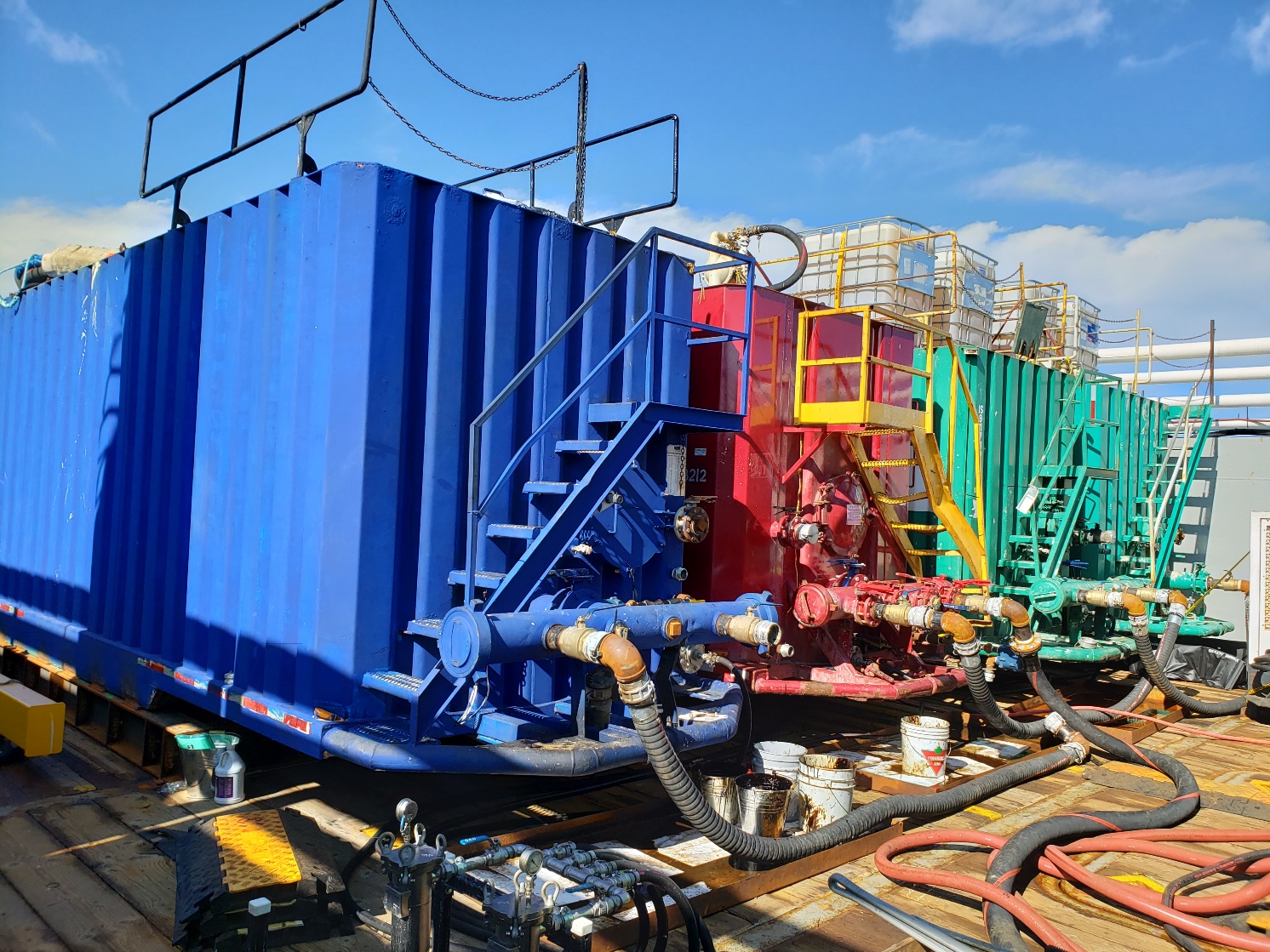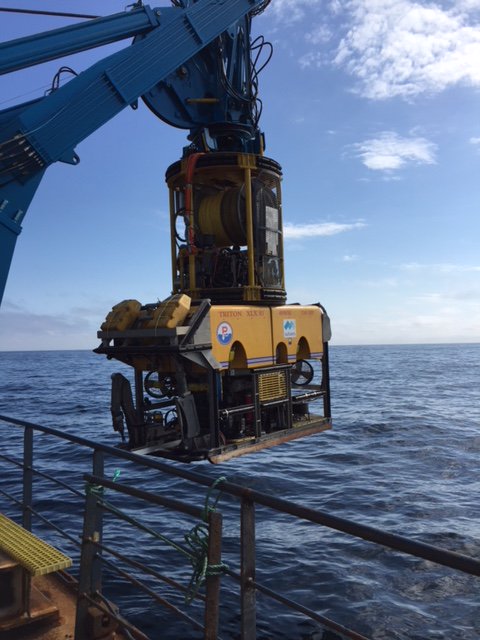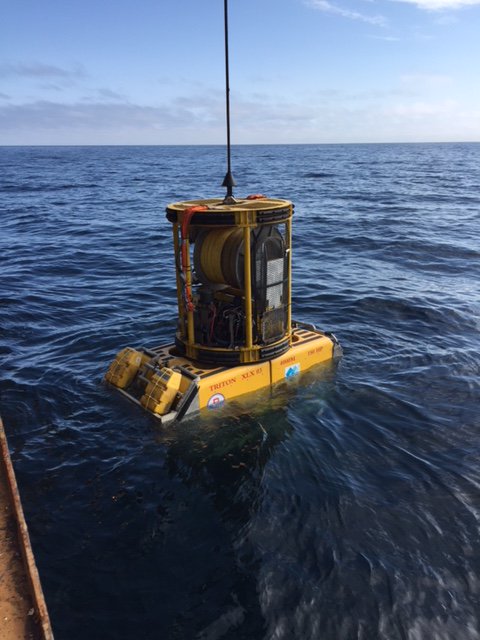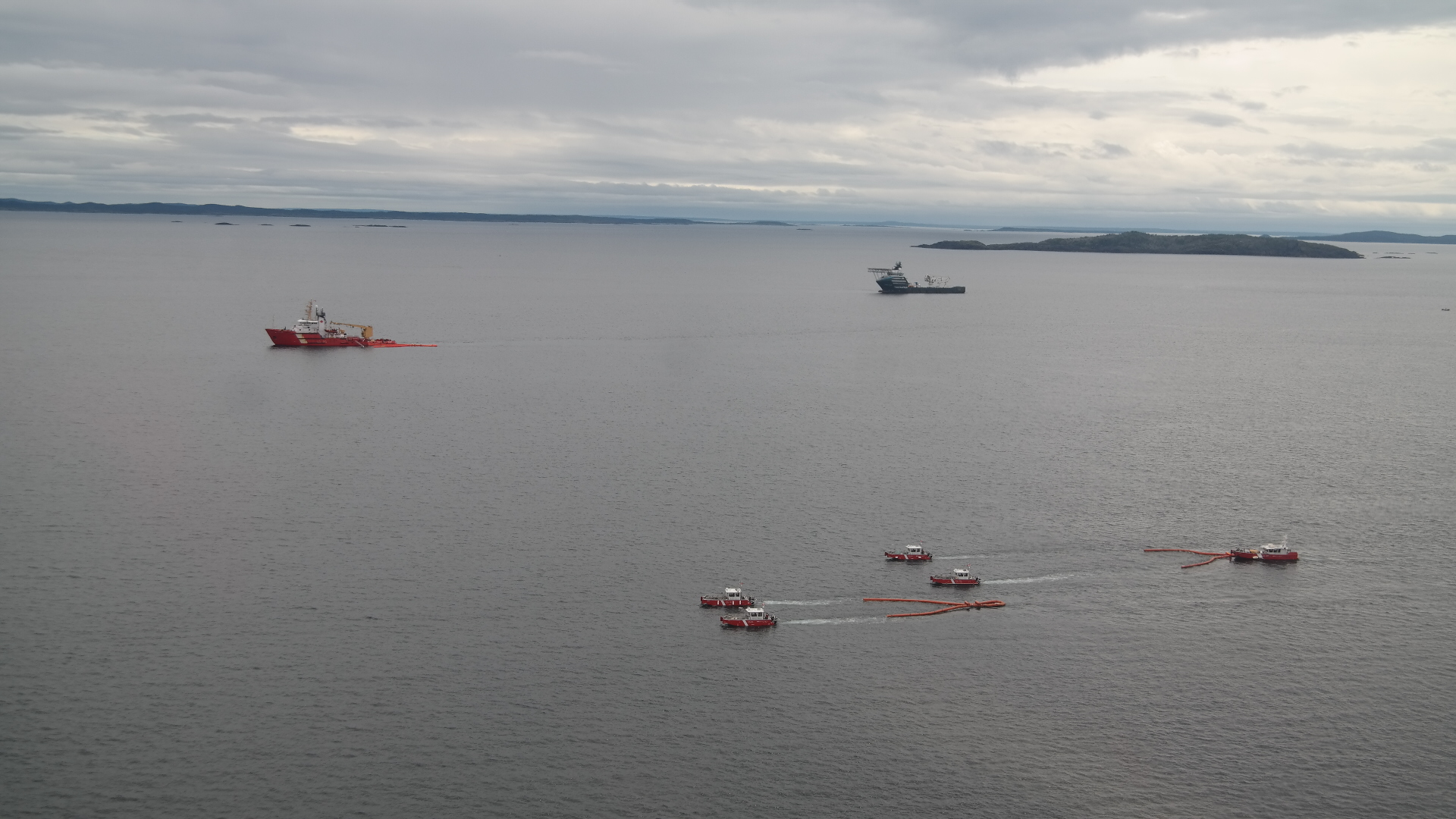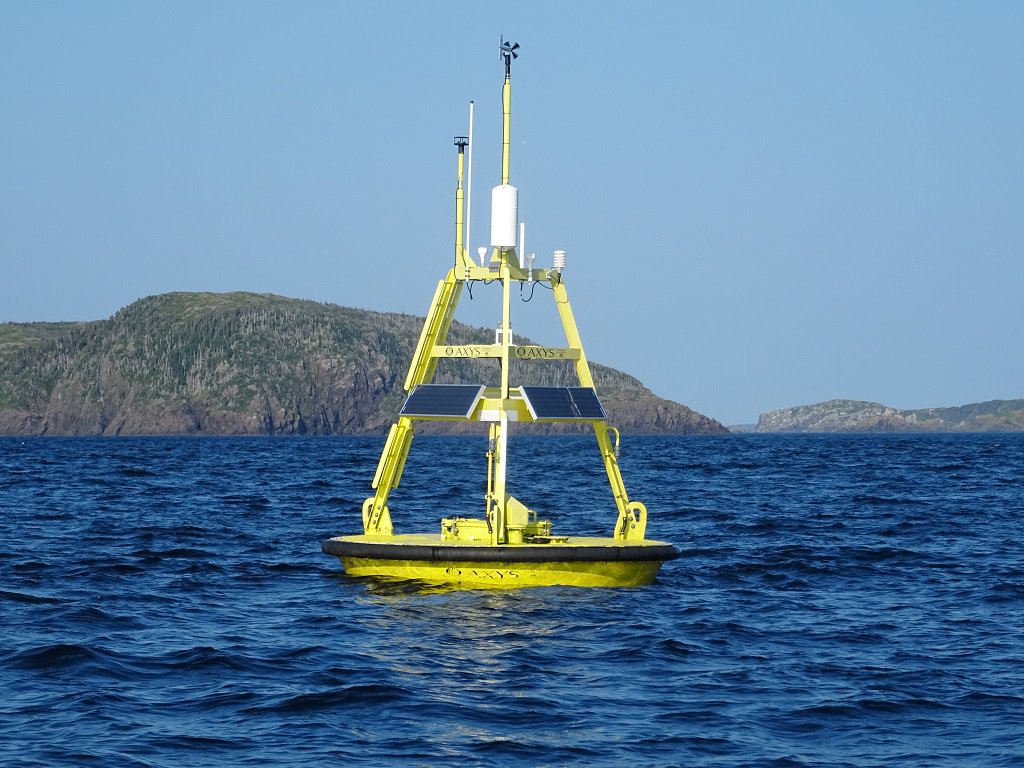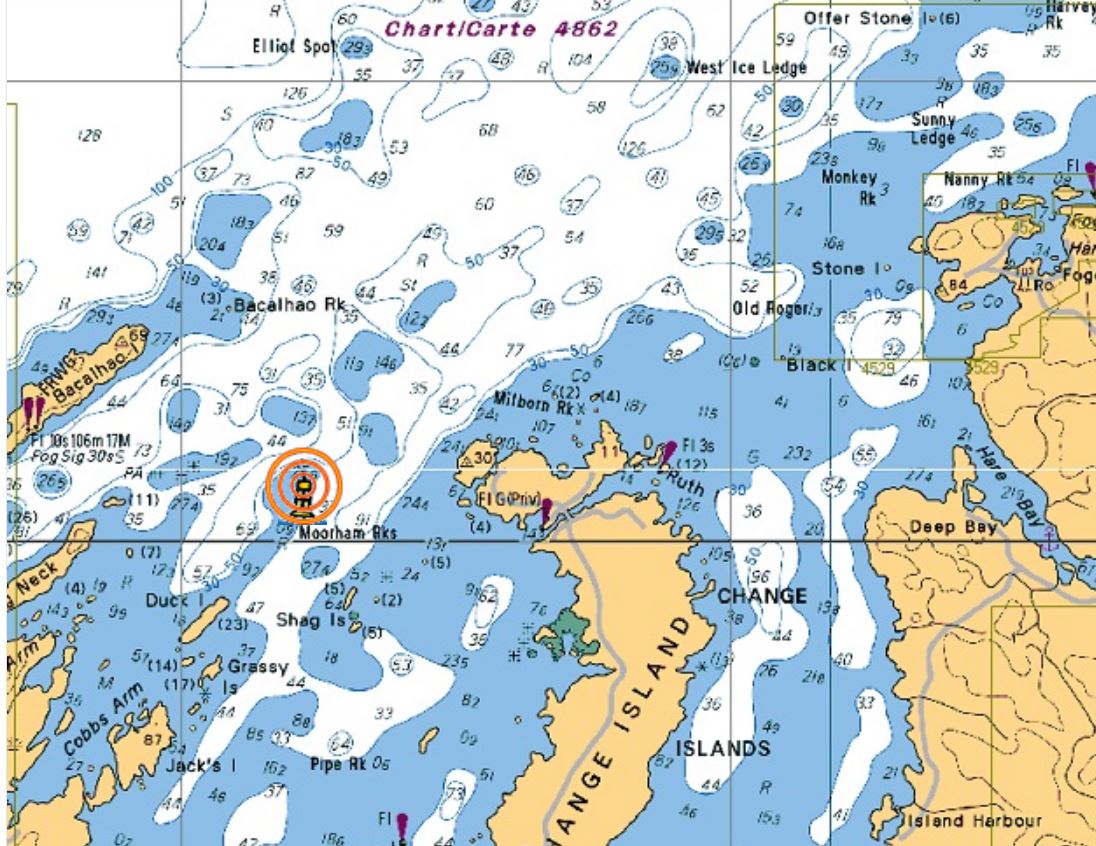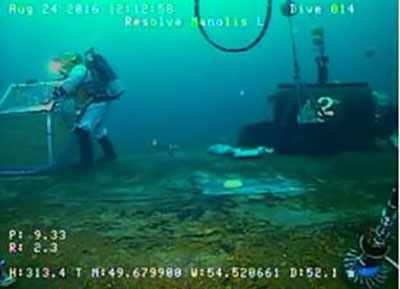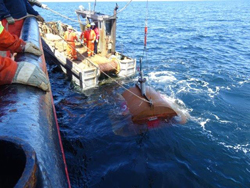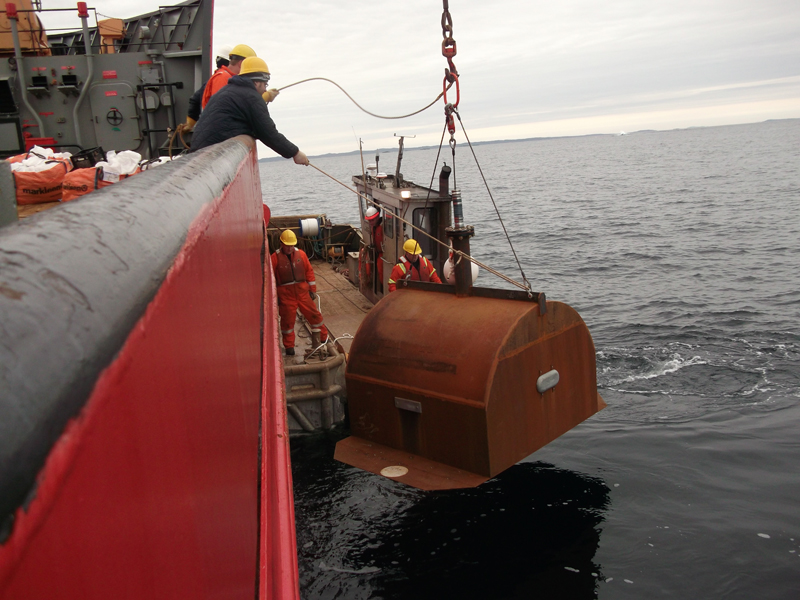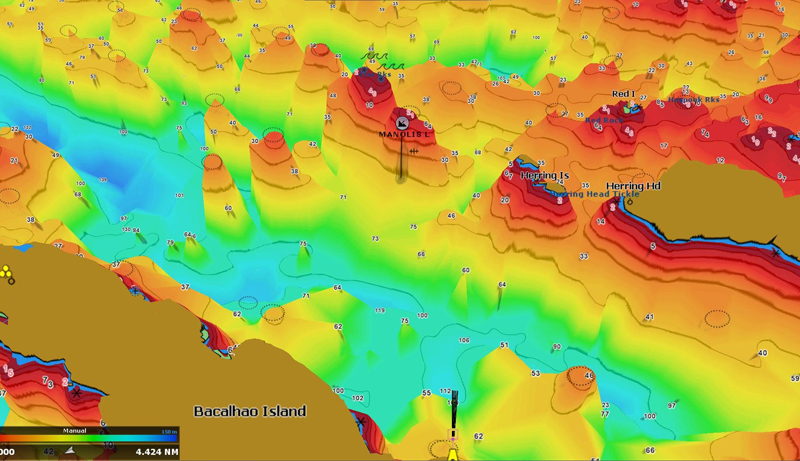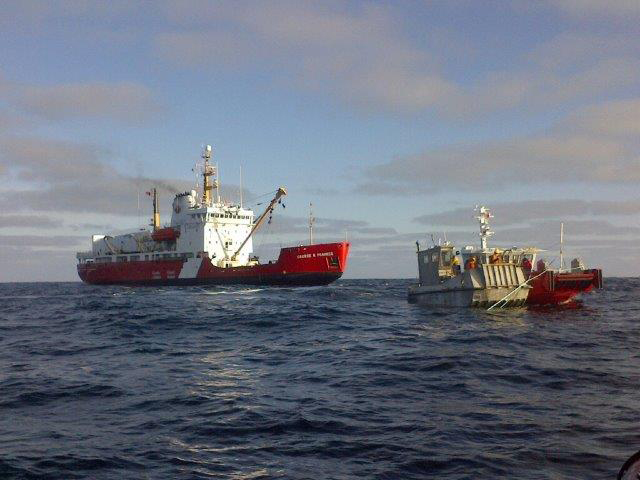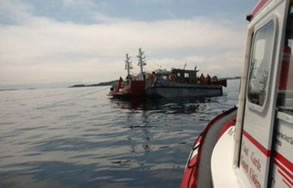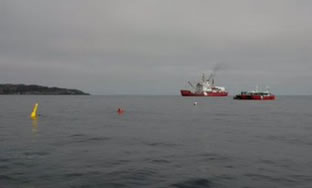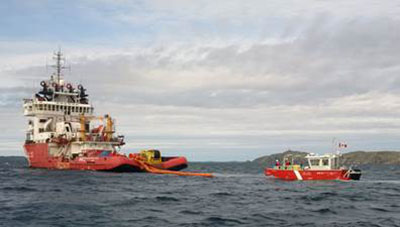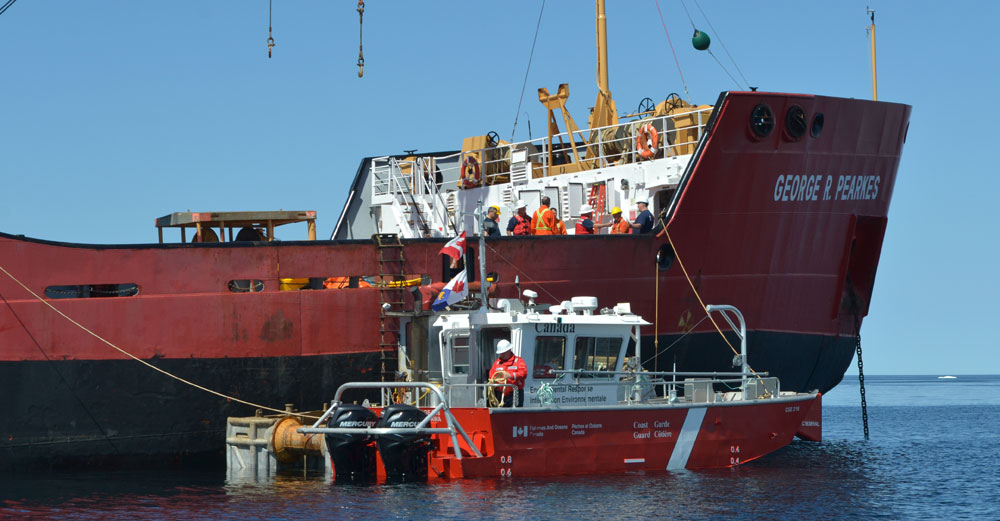Successful completion of bulk oil removal from the Manolis L shipwreck
In September 2018, the Canadian Coast Guard and its partners successfully completed bulk oil removal from the wreck of the Manolis L.. The final stage was to offload the recovered oil in St. John's for disposal by a qualified environmental company. The skill of the team eliminated the threat of a large pollution release posed by the wreck.
The Manolis L. sank in 1985 near Change Islands in Notre Dame Bay, Newfoundland and Labrador. It lies at a depth of roughly 70 metres.
How the oil was removed
The contractor, Ardent Global, used an underwater remotely operated vehicle with a specialized tool to tap into the hull of the Manolis L. This accessed the ship's tanks, which were identified to contain recoverable oil.
Heated water was injected into the tanks to increase the fluidity of the oil. Once this was achieved it was then pumped aboard the salvage ship where the oil and water were separated.
Canadian Coast Guard Environmental Response crews and equipment were on site throughout the operation, ready to recover any oil that was released.
Timeline
January 1985
- M.V. Manolis L. was outbound from Botwoo, Newfoundland, to Quebec, loaded with newsprint.
- The vessel ran aground on Blow Hard Rock, Notre Dame Bay, and sank 70 metres. The vessel was reported to contain roughly 462 tonnes of heavy fuel and 60 tones of diesel.
- When the Manolis L. sank a small amount of oil was observed on the water's surface, but could not be recovered due to the winter sea ice conditions.
- Over the next 28 years, there were no reports of oil pollution at the site until 2013, when an intense storm system in the area generated strong sub-surface ocean currents, bringing an oil sheen to the surface of the water.
March 2013
- Reports of oil on the water near Change Islands, NL, were determined to be coming from the wreck of the Manolis L..
- On March 31, 2013, the local Canadian Coast Guard Environmental Response Unit received reports of oil on the water.
- Their investigation discovered two cracks in the hull of the ship, one was 22 inches and another that was 12 inches, both in close proximity and leaking a small quantity of oil. Upon discovery of the original leaks in March 2013, the Canadian Coast Guard contained the oil using weighted neoprene sealants and a cofferdam to catc small amounts of oil that could escape.
July 2016
- A technical assessment was completed to provide necessary information such as the location of the oil within the wreck, and the estimated amount of oil remaining.
January 2018
- The Canadian Coast Guard announced that it would seek proposals from qualified marine salvage companies to remove recoverable oil remaining from the wreck.
April 2018
- A contract valued at $15,106,400 was awarded to Ardent Global LLC.
July 2018
- We mobilized our members and environmental response equipement to 2 operational sites:
- an incident command post in Twillingate to oversee the operation
- a staging area in Herring Neck for our pollution response crews and vessels
- The CCGS Earl Grey was onsite with onwater response equipment.
August 2018
- Work to remove recoverable oil from the wreck began.
September 2018
- Oil recovery operation successfully concluded. The recovered oil was transported to St. John’s, NL, offloaded and disposed by a qualified environmental company.
Image gallery
Operational cost
Since 2013, the costs associated with operations on the Manolis L. have been covered by the Canadian Coast Guard and other government departments as part of departmental operational budgets.
From May 2013 to September 2017, our associated operational cost was $8.2 million.
This figure includes the $6 million technical assessment done in August/September 2016. This assessment was made to determine the best method to contain or remove the vessel, and minimize risk to the environment.
The Marine Liability Act sets out the provisions of the Ship Source Oil Pollution Fund. This fund was established to ensure the payment of claims for marine oil pollution originating from ships. The system is designed to cover the risk of non-payment by ship owners responsible for pollution.
However, the Marine Liability Act restricts cost recovery under the fund to 5 years from the date of the original pollution occurrence, which in this case, refers to when the vessel sunk.
If you spot oil
You should report any oil pollution sightings as soon as possible to the Environmental Emergencies Line at:
- 709-772-2083
- 1-800-563-9089 (toll-free)
Related links
News releases
- Date modified:

